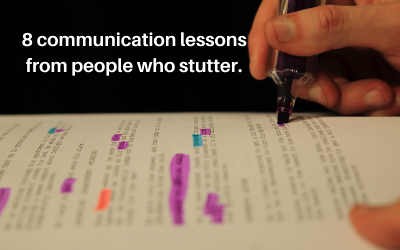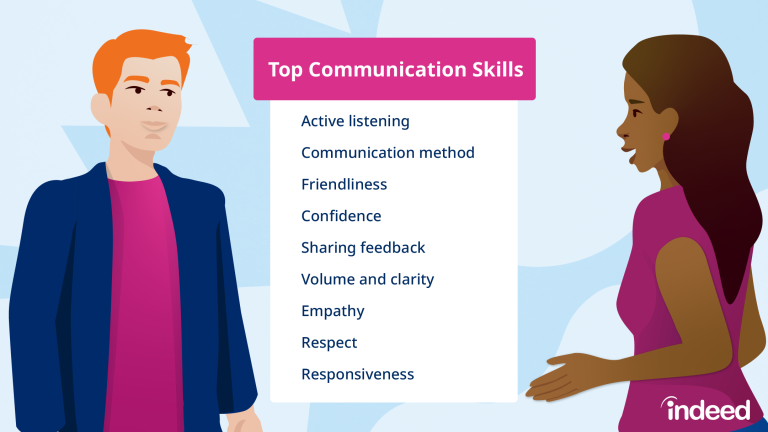How To Present A Clear Message To Any Audience: The Rule of Three
by Andrea Pacini — Tuesday 9 August 2022
- Public Speaking
- Confident Presenter
Have you ever had this experience: it becomes increasingly obvious to you during a presentation that the structure isn’t clear enough? You’re losing the audience (which might be clients, colleagues, the board, partners or investors).
If so, you are not alone. Most business leaders and professionals struggle with this.
Fortunately, there is one simple yet powerful communication technique that will help you: the Rule of Three.

The Rule of Three
Three is the most powerful number in communication. An audience is far more likely to remember information if it’s presented in groups of threes.
If you give your audience one piece of information, they will feel it’s not enough. If you offer more than three they may find that overwhelming.
Harvard Professor George Miller published a paper in 1956 called The Magical Number Seven, Plus or Minus Two . He argued at the time that we struggle to retain more than seven or nine digits.
More recent scientific research brings that figure down to three or four pieces of information.
The advert which launched the original BBC Three channel featured a song by Bob Durough in which he sings: “Three is a magic number”. There is something so right about things that come in threes. They are effective and satisfying.
Three in Everyday Life
Threes are deeply embedded in our culture as easy ways to remember things. Once you realise it you’ll notice threes everywhere.
Good stories have a beginning, middle and end
Most plays have three acts
Films and books come in trilogies
Some of the best marketing slogans use just three words
Just Do It (Nike)
I’m loving it (McDonald’s)
Every little helps (Tesco)
Taste the difference (Sainsbury’s)
The UK government used the power of three for their Covid slogans
Stay at Home, Protect the NHS, Save Lives
Hands, Face, Space
Some of the most powerful political statements use three
Liberté, Égalité, Fraternité (the national motto of France)
Life, liberty, and the pursuit of happiness (the well-known phrase from the United States’ Declaration of Independence)
Government of the people, by the people, for the people (Abraham Lincoln’s Gettysburg Address)
Our priorities are Education, Education, Education (Tony Blair)
Fairy tales often use three for maximum impact
The Three Musketeers
The Three Little Pigs
Many businesses use a three-tier pricing structure. You often come across bronze, silver and gold price points or service levels. It’s no coincidence that we use the same system for first, second and third in sporting events. No one cares who came fourth.
The rule of three is often used to great effect in comedy. Comedies often have three characters (like the old Englishman, Irishman and Scotsman routines). The first two examples are sensible and the third is ridiculous.
Using three words or three phrases for maximum impact appears in all sorts of other areas of life. Here are some other famous examples:
Ready, steady, go
The truth, the whole truth, and nothing but the truth
Sex, drugs & rock n’ roll
See it, say it, sorted (British Transport Police)
Applying the Rule of Three to Presentations
Next time you prepare a presentation, try applying the Rule of Three. Break down your structure into three parts.
At Ideas on Stage we’ve worked with thousands of clients since 2010 and I’ve never seen a presentation that can’t be divided into three parts.
If you aren’t doing this, and paying attention to the way you structure your presentations, you’re making it unnecessarily difficult for your audience to follow you, remember what you say, and take action.
To help you understand how you can apply the magic number three to your presentations, here are some examples I’ve come across in a business context. Feel free to adapt these for your own use.
- The three priorities we’ll use to achieve the sales target for the next quarter
- Three reasons to buy your product or service
- Problem, Solution, Call to action
- Three benefits to your solution
- Three reasons why the board should approve the budget for your project
- Three reasons to hire you
- Context, Actions, Results
- Three reasons to invest in your startup
Sticking to Three
People often push back about the Rule of Three and tell me they have more than three points to share during a presentation. How can they possibly stick to three points?
If you’re thinking the same, ask yourself the following:
- Do you really need to include everything? Are those nine points of equal importance? Of course not. Often, it’s better to explain three things that someone will comprehend rather than overwhelming them with too much information. Remember, if everything is important, nothing is important .
- If there really are nine important points, can they be grouped into three sections? Perhaps there are patterns and points of connection? Try combining certain elements so you can still stick to the Rule of Three.
Putting it into Practice
Alan Furley is the Co-Founder and CEO of ISL Talent, an award-winning UK Recruitment Consultancy. They work as a talent partner to startups and scaleups to help them build strong teams.
We worked with Alan to help him create a presentation for prospects on the following topic: How To Get Your First 10 Hires Right.
Alan broke the one-hour presentation down into three key messages which had some supporting points (also broken down into threes).
Key message 1: If you fail to prepare, you prepare to fail
- Spend time planning before jumping into hiring
- A clear process for your next hire
- The power of an Org Chart
Key message 2: Treat your employees like you treat customers
- Stand out to people who aren’t looking for a job
- Think about them not you
- Purpose, team and values in hiring
Key message 3: Think retention first, recruitment second
- Hire potential vs credentials
- Capturing your values
- Have a retention plan
The beauty of this technique is that it works all the time. Regardless of how long your presentation is — 5 minutes, 30 minutes or an hour — you can always structure your content into three parts.
I use the Rule of Three myself when I’m running group workshops for our clients. The course comprises five online sessions of three hours each. I like to structure the whole workshop into three parts across those 15 hours like this:
- How to craft a captivating message
- How to reinforce your message with powerful visuals
- How to deliver your message with confidence
The Rule of Three in Real Life
In 2007 an academic paper titled The rule of three: How the third event signals the emergence of a streak examined people’s perception of ‘streaks’ in stock market movement and sports victories.
When something repeats three times we are most likely to see that as a ‘streak’. If it happens more often we don’t place any more importance on it.
The study asked students how much (theoretical) inheritance money they would invest in a stock. The students were prepared to put the most money into shares when they had risen in value over the three previous days. If the stock continued to rise it didn’t make them any more likely to invest.
Similarly, bookies and gamblers place greater weight on teams that have won three games in a row.
The study concluded that punters would be well advised to bet against teams that have won three games in a row and back teams that have lost three games in a row (in order to beat the market).
If you try to deliver too many points to your audience you will lose them along the way.
Our brains are wired to find the Rule of Three particularly satisfying and we retain three pieces of information more easily than any other quantity.
The Rule of Three is widely deployed in literature, comedy and politics. It finds its way into all sorts of catchphrases and slogans.
Using the Rule of Three in your presentations is highly effective. Any presentation can be restructured to conform to three sections.
Even if you have more points to make, still try to structure your presentation in three parts.
If you enjoyed this article, I would love to hear from you. Please get in touch or share the article with any colleagues or friends who might benefit from the ideas.
If you want to become a more confident presenter, take the Confident Presenter Scorecard . Answer simple Yes/No questions, get an instant score plus suggestions for improvement. It takes less than 3 minutes. Once you complete the scorecard, you’ll receive a free pdf copy of my best-selling book Confident Presenter .

The Master Communicator Blog
Transform your presentations with the rule of three.

Recently, I wrote about how to use the rule of thirds in composing and framing your video image and how that impacts your credibility. Three is a powerful number that guides how our brains process information. It holds a special place in the way great speeches and presentations have been written and delivered.
The rule of three is a widespread organizing principle for just about everything in our world. In physics, we have Newton’s three laws of motion. In music, we have the concept of triads and three-part harmony. Most stories, whether in theater, folk tales, or movies, follow the three-act structure of a beginning, a middle and an end.
The knack for pattern recognition is hard-wired into our brains, which seem to work best when thinking in trios. If you want something to stay in people’s heads, put it into a tri-part sequence. The possibilities run from the banal to the sublime:
🌼Snap crackle pop. 🌼Life, liberty, and the pursuit of happiness. 🌼Father, Son, and the Holy Ghost.
Once you’re aware of the rule you’ll start to see and hear it everywhere: Blood sweat and tears. Lights, camera, action. The Three Stooges. Three Little Pigs. Just Do It (Nike ). Turn to Cold (Tide). Taste the Feeling (Coke). The list is endless.
Take the tricolon , a rhetorical device using a series of three words, phrases or sentences in a parallel structure, length, or rhythm that produces sticky phrases. For example, “We cannot desecrate, we cannot consecrate, we cannot hallow this ground,” from Abraham Lincoln’s Gettysburg Address.
In pop culture, one iconic film scene has been memorialized in memes as The Phone Speech. Liam Neeson as Bryan Mills in Taken 1 speaks a warning to his daughter’s captor: “ I will look for you, I will find you, and I will kill you.”

Simplicity is that makes the rule of three so powerful, satisfying, and persuasive.
“One won’t do, two isn’t quite enough,” as James Bond author Ian Fleming noted in Goldfinger. He wrote: “Once is happenstance. Twice is a coincidence. Three times is enemy action.”
Here are three ways to use the rule of three in your next speech or presentation:
1. Structure the core of your presentation into three parts.
🌼Beginning, middle, end. 🌼Opportunity, solution, benefit. 🌼Problem, solution, action.
2. Use three bullets to support a main idea.
According to Roy Peter Clark , senior scholar at The Poynter Institute: “The mojo of three offers a greater sense of completeness than four or more.”
🌼One bullet is a power statement. 🌼Two bullets are for comparison and contrast. 🌼Three bullets offer completeness, wholeness, and roundness
3. Feature three agenda items or supporting ideas for your speech.
Organize your content into three units to help your audience follow along, understand your idea, and buy into your point of view. Announcing that you have “three solutions to share with you today,” sparks attention. Meetings you lead will be more gratifying. People will want to attend your presentations knowing that they will leave with a trio of valuable ideas worthy of their time.
Legendary author and lecturer Dale Carnegie said about presentation structure: “Tell them what you’re going to tell them, tell them, then tell them what you just told them.”
Now that you know a bit more about the rule of three and how it can help you be a better speaker and presenter, you can begin to put it into practice to bring structure and clarity to your business communication.
Implementing the rule of three is as easy as ABC. It requires a shift in your mindset to identify what is truly essential. Yet, it can have a huge impact on the way you are perceived and whether people want to listen to what you have to say.
Rosemary Ravinal
Business leaders and entrepreneurs who want to elevate their public speaking impact, executive presence, and media interview skills come to me for personalized attention and measurable results. I am recognized as America’s Premier Bilingual Public Speaking Coach after decades as a corporate spokesperson and media personality in the U.S. mainstream, Hispanic and Latin American markets. My company’s services are available for individuals, teams, in-person and online, and in English and Spanish in South Florida and elsewhere.

You might also be interested in

8 communications lessons from people who stutter
The challenges faced by people who stutter, and former stutterers offer valuable lessons in communication for anyone who seeks to improve their ability to connect with impact.

What love language do you speak?
How do the five love languages relate to public speaking? When you speak from your heart, speak what you know and gift your audience knowledge and ideas that will make their lives better, you are spreading love.

True or False: 9 public speaking myths debunked
If you think that the hallmark of good public speaking is the absence of filler words, you’re wrong. It’s a myth, like many others, that inhabit the fascinating world of leadership communication. Here are nine speaking myth-busters.
Let me help you speak, engage, and persuade like a pro in person and online in English and Spanish.
Oratory Club
Public Speaking Helpline

How to Use the ‘Rule of Three’ for Engaging Speeches
The ‘rule of three’ is a powerful technique for creating engaging speeches. By organizing your content into three main points or ideas, you can capture and hold your audience’s attention more effectively.
This article will explore how to use the ‘rule of three’ to create speeches that are memorable, impactful, and engaging. Whether you are giving a presentation at work, delivering a toast at a wedding, or speaking at a public event, mastering this technique will help you become a more confident and persuasive speaker.
So, let’s dive in and discover the secrets of using the ‘rule of three’ to captivate your audience.

Credit: virtualspeech.com
Table of Contents
Using Rhetorical Devices
Learn how to create engaging speeches using the ‘rule of three’, a rhetorical device that involves grouping ideas into sets of three. This technique adds emphasis, rhythm, and memorability to your speech, making it more impactful and memorable for your audience.
Whether you’re presenting to a large crowd or in a one-on-one setting, mastering the ‘rule of three’ can elevate your speaking skills to the next level.
The art of delivering an engaging speech lies in the effective use of rhetorical devices. By incorporating the ‘rule of three’ into your speech, you can captivate your audience and leave a lasting impression. This rule suggests that things that come in threes are inherently more satisfying, effective, and memorable.
One way to implement this rule is by using triads for emphasis.
Using Triads For Emphasis:
- Triads involve grouping similar ideas or concepts into sets of three.
- By following this pattern, you can create a sense of completeness and balance in your speech.
- Triads can be used to enhance your message, emphasize key points, or provide supporting evidence.
- Here are some examples of triads in action:
- “i came, i saw, i conquered” – julius caesar
- “government of the people, by the people, for the people” – abraham lincoln
- “friends, romans, countrymen” – mark antony in shakespeare’s julius caesar
Utilizing repetition for emphasis:
- Repetition is a powerful rhetorical device that can help drive home your message.
- By repeating key words or phrases, you can create emphasis and reinforce your ideas.
- Repetition can also help in building a rhythm and creating a memorable speech.
- Here are some ways to use repetition effectively:
- Repeat a word or phrase at the beginning or end of consecutive sentences or paragraphs.
- Use anaphora, repeating a word or phrase at the beginning of multiple clauses or sentences.
- Employ epistrophe, repeating a word or phrase at the end of multiple clauses or sentences.
- Example: “i have a dream” – martin luther king jr. In his famous speech
Employing parallelism for clarity:
- Parallelism involves using similar grammatical structures or patterns to create clarity and balance in your speech.
- It helps in guiding your audience’s understanding and makes your speech more cohesive.
- Here are some ways to employ parallelism:
- Use parallel sentence structures by starting each sentence with the same grammatical form.
- Create parallel clauses by using the same structure in multiple parts of a sentence.
- Example: “ask not what your country can do for you, ask what you can do for your country” – john f. kennedy
By using triads for emphasis, repetition for emphasis, and employing parallelism for clarity, you can elevate the impact of your speeches and ensure your message remains captivating and memorable. So, the next time you craft your speech, remember the power of the ‘rule of three’ and make your words resonate with your audience.
Incorporating Stories And Examples
Learn how to use the powerful ‘rule of three’ to create captivating speeches by incorporating stories and examples. Discover how this technique can engage your audience and make your message memorable.

Telling Three Related Stories:
- Story 1: The power of personal anecdotes
- Start with an intriguing personal story or experience that connects with the topic.
- Share how incorporating personal anecdotes can captivate an audience and make your speech more relatable.
- Explain the impact of using storytelling to convey messages effectively.
- Story 2: The art of historical narratives
- Introduce a historical event or figure that aligns with your speech’s key point.
- Describe how historical narratives can engage listeners by providing context and relevance.
- Illustrate how weaving historical stories into your speech can make complex ideas more accessible.
- Story 3: Unveiling inspiring success stories
- Highlight a remarkable success story or achievement that supports your speech’s main theme.
- Emphasize how sharing success stories can inspire and motivate your audience.
- Discuss the significance of using real-life examples to strengthen your key message.
Sharing Three Relevant Examples:
- Example 1: Sports and overcoming challenges
- Outline a sports-related example that demonstrates perseverance and resilience.
- Show how using this type of example can connect with audiences who appreciate sports references.
- Explain how relating the example to your topic can aid in reinforcing your speech’s central idea.
- Example 2: Technological innovations and impact
- Discuss a trending technological development that showcases the power of innovation.
- Describe how incorporating relevant examples can establish credibility and relevance.
- Demonstrate how these examples can assist in clarifying complex concepts or ideas.
- Example 3: Social issues and creating change
- Present an example of a social issue where individuals or groups have enacted positive change.
- Emphasize how using this type of example can elicit emotions and engage listeners.
- Discuss the importance of inspiring action through relatable and impactful examples.
Explaining Three Case Studies:
- Case study 1: The power of storytelling in advertising
- Examine a case study where a company effectively used storytelling techniques in their advertising campaigns.
- Highlight the benefits of storytelling and its impact on the brand’s message and customer engagement.
- Analyze the success factors and outcomes of the case study, providing insightful takeaways.
- Case study 2: Public speaking and personal growth
- Explore a case study of an individual who overcame their fear of public speaking and experienced personal growth.
- Discuss the transformative effects public speaking can have on one’s confidence and communication skills.
- Evaluate the key steps, techniques, and mindset shifts that led to the positive outcomes in the case study.
- Case study 3: Using examples in educational settings
- Investigate a case study where incorporating relevant examples enhanced the effectiveness of an educational program.
- Highlight how using examples created a deeper understanding and improved knowledge retention among students.
- Evaluate the strategies employed in the case study and their implications for educational practices.
Creating Memorable Soundbites
Learn how to create engaging speeches using the ‘rule of three’ to craft memorable soundbites. By structuring your speech with three key points, you can capture your audience’s attention and deliver impactful messages.
Crafting Three Impactful Soundbites
- The rule of three is a powerful tool for creating memorable soundbites in your speeches. By following this principle, you can engage your audience, make your key points stand out, and leave a lasting impression. Here are some tips for crafting three impactful soundbites:
- Keep it concise: Soundbites are supposed to be short and snappy. Aim for a maximum of 10-15 words to ensure they are easy to remember and repeat.
- Focus on key messages: Identify the three most important messages you want to convey in your speech. Each soundbite should encapsulate one of these messages in a compelling and concise manner.
- Use strong imagery or metaphors: Incorporate vivid imagery or metaphors into your soundbites to make them more memorable and engaging. This helps to convey your ideas in a way that sticks with your audience.
Injecting Humor Into The Three Soundbites
- Adding humor to your soundbites can make them even more impactful and catchy. Humor not only entertains your audience but also helps to build rapport and make your message more relatable. Here’s how you can inject humor into your three soundbites:
- Puns and wordplay: Play with words to create clever and witty soundbites. Use puns, double entendres, or unexpected word combinations to add a touch of humor and make your soundbites more memorable.
- Anecdotes and funny stories: Incorporate humorous anecdotes or funny stories into your soundbites. These real-life examples can not only entertain your audience but also serve to illustrate your points in a lighthearted way.
- Surprise and irony: Injecting surprise or irony into your soundbites can evoke laughter from your audience. Use unexpected twists or ironic statements to catch their attention and make your soundbites more memorable.
Using The Rule Of Three For Catchy Slogans
- The rule of three is not limited to speeches; it can also be applied to create catchy slogans that resonate with your audience. Whether you’re promoting a product, service, or idea, using this principle can help your slogan stick in people’s minds. Here’s how to use the rule of three for catchy slogans:
- Simplicity is key: Craft your slogan using three concise and impactful words or phrases. Make sure it’s easy to understand and remember, avoiding unnecessary complexity.
- Rhythm and repetition: Consider the rhythm and flow of your slogan. Using parallel structure or repeated sounds can make it more catchy and appealing to the ear.
- Emphasize benefits: Highlight the key benefits or unique selling points of your product or service in your slogan. By focusing on what your audience wants or needs, you can create a slogan that captures their attention and resonates with them.
Remember, the rule of three is a versatile technique that can be applied not only in speeches but also in various other forms of communication. By crafting impactful soundbites and catchy slogans, you can effectively engage your audience and leave a lasting impression.
Frequently Asked Questions Of How To Use The ‘Rule Of Three’ To Create Engaging Speeches
What is the ‘rule of three’ in speeches.
The ‘rule of three’ is a rhetorical technique where ideas or concepts are presented in groups of three. This helps to make the speech more engaging and memorable to the audience. By using the power of three, you can create a pattern that is easy to follow and understand.
How Does The ‘Rule Of Three’ Improve Speech Delivery?
The ‘rule of three’ improves speech delivery by providing structure and rhythm to your message. It allows you to create a concise and impactful argument or story. By grouping ideas in threes, you make them more memorable and easier to comprehend, which ultimately engages and captivates your audience.
Can The ‘Rule Of Three’ Be Used In Different Types Of Speeches?
Absolutely! The ‘rule of three’ can be used in various types of speeches such as persuasive speeches, informative speeches, and even entertaining speeches. It is a versatile technique that helps you capture and hold the attention of your audience, regardless of the nature of your speech.
How Can I Incorporate The ‘Rule Of Three’ In My Speech?
To incorporate the ‘rule of three’ in your speech, start by identifying the main points or key ideas you want to convey. Then, structure your speech by grouping these points into three distinct categories. Make sure to craft each category with a clear and concise message.
This will make your speech more organized and impactful.
Utilizing the ‘rule of three’ in speech creation is a powerful method for engaging your audience and making your message more memorable. By organizing your ideas into three distinct points, you provide structure and clarity to your speech. This technique has been used by the world’s greatest speakers throughout history, proving its effectiveness.
Firstly, the ‘rule of three’ facilitates comprehension by breaking down complex ideas into manageable chunks. Secondly, it creates a rhythm that captures the attention of your listeners and maintains their engagement. Lastly, it enables you to emphasize your key points and leave a lasting impression on your audience.
Remember to include a mix of verbal and visual elements to enhance your speeches. Practice frequently and seek feedback to improve your delivery. By incorporating the ‘rule of three’ into your speechwriting, you will be well on your way to captivating your audience and delivering effective and impactful presentations.
So, start implementing this rule today and watch your speeches come to life.
Similar Posts
Can autistic people be good at speaking.
Can autistic people be good at speaking? It’s a question that may have crossed your mind. Well, let’s dive right into it! When it comes to autism, you might have heard about challenges with communication. But here’s the thing: being autistic doesn’t mean someone can’t be amazing at speaking. In fact, many autistic individuals have…
Corporate Comedian Entertainer
A corporate comedian entertainer brings laughter and entertainment to corporate events, increasing audience engagement and creating a fun atmosphere. With their unique blend of humor and interactive performances, they keep the audience entertained and leave a lasting impression. A successful corporate event requires careful planning to ensure that attendees are engaged and entertained throughout. While…

Female Leadership Development Program
The Female Leadership Development Program aims to empower women by providing training and support to develop their leadership skills. This comprehensive program offers a range of workshops, mentorship opportunities, and networking events to help women excel in their careers and take on leadership roles. With a focus on building confidence, enhancing communication skills, and fostering…
What are the Functions of the Speech Act?
The functions of the speech act include conveying information, expressing emotions, making requests, giving commands, asking questions, offering assistance, and persuading others to take a particular action. In addition, speech acts can also be used to apologize, congratulate, thank, greet, and compliment others. These functions are essential for effective communication and allow individuals to express…

Top Communication Skills
Communication skills are crucial for effective interaction, as they allow individuals to convey their ideas and thoughts clearly and efficiently. They encompass both verbal and non-verbal forms of communication, such as active listening, expressive body language, and articulate speech. Developing strong communication skills can greatly enhance one’s personal and professional relationships, improve teamwork and collaboration,…
What Are The Principles Of A Strong Presentation?
Are you tired of giving lackluster presentations that fail to captivate your audience? Do you want to learn the secrets to delivering a strong and impactful presentation? Look no further! In this article, we will explore the principles of a strong presentation that will leave your audience engaged and inspired. Whether you are a seasoned…

IMAGES
VIDEO